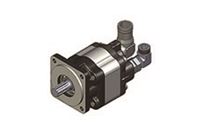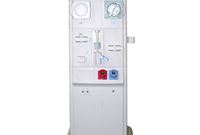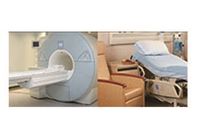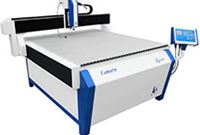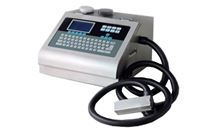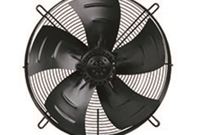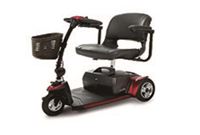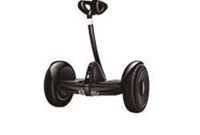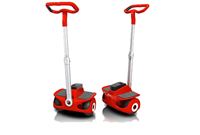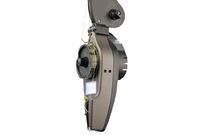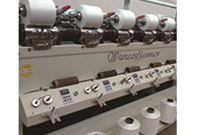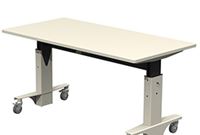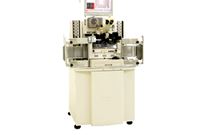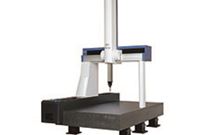- Q: Why is the motor so “hot” during operation? It is so hot that I could not hold it.
- A:
Well, the motor housing could be as hot as 100Deg.C if the motor is built using Class F insulation. To judge if this is the right motor for the application, you need to run the motor at the specified duty cycle and load condition, and check the motor case temperature with a thermal meter. Most of IMS’ motors are designed and built with Insulation Class F materials.
- Q: What information do I need to provide in order for you to help me select an appropriate motor solution for my application?
- A:
The absolute minimum information required to properly select a motor solution is the supply voltage, available continuous and peak current, load torque, speed at load, and desired motor technology (brush or brushless). To be sure, the more application information you can provide, the more accurate and exact motor we can offer or quote to you. Examples of other helpful information include: a description of the application, duty cycle (time on, time off), ambient temperature, and motor size requirements (maximum diameter, length, and weight). Some other important technical details, like radial or axial loads, environmental conditions (exposure to water, dust, humidity extremes, and special atmospheres), feedback requirements (encoder resolution), EMI/RFI suppression requirements, and brake requirements are extremely helpful. For positioning applications, load inertia, angular displacement, move time, and friction torque can be provided instead of load torque and speed at load. Here at IMS, we want to make it easy for you. Please go to RFQ and complete the application form with as much information as possible, provide contact information, and let our engineers do the rest.
- Q: How do I calculate my load torque?
- A:
The torque requirement for an application can be calculated, measured directly using a torque measuring device (torque watch), or measured indirectly using a DC motor. When using a motor, measure the current draw of the motor under load, and calculate the torque using the equation below:
T = (I - INL) x (KT x N x h)Where
I = Current @load
T = Torque @load
KT = Torque Constant
N = Gear Ratio (Equals 1 if there is no gearbox) h = Gearbox Efficiency (Equals 1 if there is no gearbox)
INL = No-Load CurrentPlease be aware the results following this equation are reasonably close and suitable for most purposes. While finalizing the most suitable motor, of course, we need to take into consideration other thermal factors, such as safety margin, power supply, duty cycle, and environmental cooling.
- Q: How do I calculate the rated speed or the speed at a specific torque for a motor or gearmotor?
- A:
The output speed for a motor or gearmotor is given by the equation below:
w = [VS - (I x Rmt)] / (KE x N)Where
w = Speed
VS = Supply Voltage
I = Current (Obtained from previous equation) Rmt = Motor Terminal Resistance
KE = Back-EMF Constant
N = Gear Ratio (Equals 1 if there is no gearbox)Maximum continuous (rated) current can be obtained from the previous equation and used as the current value to obtain the speed at the maximum continuous (rated) torque. Please be aware that this equation approximates the motor speed and does not take thermal conditions into consideration. The results are reasonably close and suitable for most purposes.
- Q: How do you calculate the HP of a motor?
- A:
A motor's Hp (Horse Power) is calculated using the following equation:
Hp= (T (lb-ft) x N (rpm)/5252. This gives the Hp at a rated speed.
- Q: How can I calculate my power needs?
- A:
A simple formula can be used to roughly determine what is needed power-wise. Here’s an example:
Motor Speed:
3600 RPM
Motor Torque:
340 mNm = 0.34N.m
Voltage:
12VDC
Assumed Eff %:
80 %
Power Output:
Speed(rpm) x Torque(N.m) x 0.1047
=
127 Watts Output
Power Input:
Watts Output / Assumed Eff%
=
159 Watts Input (Required)
Current Requirement:
Watts Input / Voltage
=
13.2 Amps (Minimum)
To convert to a different unit, please go to the Unit Conversion Table
- Q: What environmental considerations are there?
- A:
Typical environmental temps for the motor should be run in a low humidity environment with an ambient temperature range of –20 C to +50 C. BLDC motors do have IP ratings associated to them and limited customization can be done to increase the IP rating. If severe conditions require IP ratings of IP54 or higher, a customized motor construction is required to accommodate this need.
- Q: How can we keep the motor temperature to a minimum?
- A:
Temperature rise can be minimized by:
1. Keeping the ambient temperature as low as possible.
2. Circulating air around the motor.
3. Making sure the motor is not insulated.
4. Mounting the motor to a good heatsink.
Additionally, selecting a more powerful motor should decrease the temperature rise if it is an important consideration.
- Q: Is there an optimum load to motor inertia ratio? Do I need to match the inertia ratios like my stepper systems?
- A:
The load to motor inertia ratios of a servo system do not need to be matched. If a system is matched 1:1, it would take half of the power to move the motor alone. The advantage of keeping an inertia ratio lower is the ability of the system to reject disturbances, but a system with a higher ratio of load to motor has a higher inherent bandwidth given the same load. This is advantageous for systems requiring quick response. You cannot, however go too high without some consequences. Dynamics are the most important part; so coupling of the motor to the load is critical. The higher the ratio, the stiffer the coupling must be. It is much easier to tune a system with perhaps a 4:1 load to motor inertia ratio then a system with a 20:1 given a stiff coupling and the same load.
- Q: Should I use brushless motor vs. brush motor in my application?
- A:
It should be important to decide when it comes to determining which motor you will need for whatever application or project you are realizing, and your choice will depend on a variety of factors. Some major issues you will need to consider are target cost, amount of power you will need and how long you need it to last. If you have a project or application where you will only need a motor for short term use or light daily duty, you may prefer a cheaper one that may wear out more quickly. If your job requires a motor that will last as long as possible, you will probably want to consider a BLDC motor, for reasons which will become apparent.
Generally speaking, a BLDC motor is considered to be a high performance motor that is capable of providing large amounts of torque over a vast speed range. The Brushless DC (BLDC) motor is the ideal choice for applications that require high reliability, high efficiency, and high power-to-volume ratio. It is unlike a brush DC motor, that the motor assembly contains a physical commutator which is moved by means of actual brushes in order to move the rotor. With a BLDC motor, electrical current powers a permanent magnet that causes the motor to move, so no physical commutator is necessary.
A BLDC motor is highly reliable since it does not have any brushes to wear out and replace. When operated in rated conditions, the life expectancy could be over 10,000 hours. For long term applications, this can be a tremendous benefit. Whenever a motor breaks down or needs to be replaced, your project, or part of it, must be shut down. This costs you time and money, perhaps a great deal depending on how long it takes to replace the worn part or parts and get the application started again. Although a BLDC motor may cost more than a brush motor, it will often more than pay for itself in the amount of work time saved.
